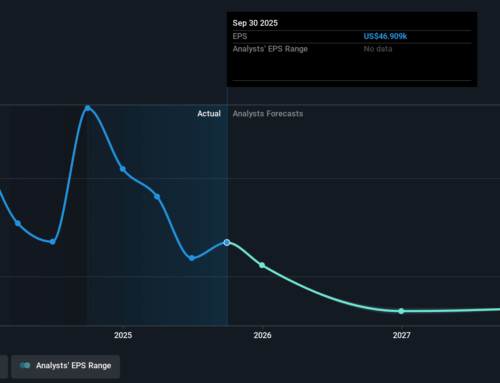Records flag ‘environmental problems’ under Pre’s Trail
November 16, 2025
QuickTake:
Newly obtained records show the landfill beneath Pre’s Trail can leak polluted water during heavy rain, with no indication that government agencies have tested one of Eugene’s most popular places to walk and run in decades.
Rain fell freely on Casper Riordan without a tree canopy to temper it.
In a clearing between the urban forests of Alton Baker Park and Eastgate Woodlands, he led a small crew of volunteers working within a tight radius marked by bright neon flags — the boundary of their restoration project.
It’s a tough place for Riordan, a stewardship coordinator with the Walama Restoration Project, to find the right plants for. Inside this nearly 2-mile loop of Pre’s Trail is the 70-acre decommissioned Day Island Landfill. About 2 feet of soil — the landfill’s cap — lie between a decade’s worth of garbage and the native species he is trying to grow.
The soil is too shallow for the roots of big trees to take hold, and so plants must endure full sun in the heat of summer. But they also have to be able to live in soft, waterlogged ground when rain returns each fall, as it had begun to do this October Sunday.

“It gets pretty wet down there. That’s more of a wet meadow,” said Riordan, referencing an area near the Interstate 5 bridge. “[There are] pools of water.”
Such pools are typically a natural part of the southern Willamette Valley’s wetlands. But here, some water may be rising from beneath an estimated 950,000 tons of buried solid waste.
Lookout Eugene-Springfield’s initial investigation into the Day Island Landfill identified a roughly 200-square-foot chemical disposal area, about the size of a small garage, that took in toxic waste from J.H. Baxter & Co. — the west Eugene wood-treatment company whose facility is now a Superfund cleanup site.


Right: Satellite image of Pre’s Trail in Alton Baker Park, March 2025.
The Environmental Protection Agency, the Oregon Department of Environmental Quality and Lane County either have not monitored the landfill site for decades or can’t find records of such work since the early 1990s. They say they have no plans to resume the monitoring.
Government agencies pointed to the landfill’s cap as the protection against human exposure to what lies beneath. They also cited the 1993 decision not to designate the property as a Superfund site, which they said removed federal oversight of follow-up actions or other requirements.
But records stored for years in Washington, D.C., archives — and released to Lookout by the EPA, through the Freedom of Information Act — describe a complex situation.
The records detail contaminants have broken through the surface and that some may be leaking into a pond near the Willamette River, south of a monitoring well where chemicals used by J.H. Baxter were detected.
These records, including photographs, show a water-saturated landfill during the rainy months.
Landfill caps typically include an impermeable liner, none of which is noted in records. Instead, those records describe groundwater moving easily through loose, sandy soil and becoming trapped beneath the cap, forcing water to seep.


What pushes through likely contains leachate, the contaminated water that filters through decaying waste. Records contain photos of standing water, some of which displays an oily sheen with orange or reddish-brown clay.
After recent atmospheric rivers this fall, puddles have lingered for days, their contents unknown, alongside a nearby pond showing similar discoloration as the records described decades ago.
These records also outline the EPA’s rationale for not listing the landfill as a Superfund site. But in a decision memo, the site’s lead investigator, Deborah Flood, did not dismiss concerns. She wrote:
“Information collected identifies (Oregon’s Department of Environmental Quality) as an active authority on the site … The site does have environmental problems associated with it; however, it does not qualify for further Superfund evaluation.”
Superfund sites represent only the most extreme contamination cases. Fewer than 1% of known toxic sites in the country qualify. Many hazardous sites fall below that threshold, and this landfill was one of those.
In 1991, then-U.S. Rep. Peter DeFazio wrote to the EPA on behalf of a constituent.
“[They are] concerned about the proposed construction of a golf course on a closed Lane County Landfill that is currently listed on the EPA’s secondary list of Superfund sites,” DeFazio wrote in a memo.
“Secondary” is not a formal EPA term, but it can refer to a site listed for investigation under the Superfund law, as the Day Island Landfill was in 1979. The EPA became involved after allegations that Monsanto Co., the maker of Roundup, dumped waste there.
In response to DeFazio’s letter, an EPA administrator outlined the situation, saying the agency found contaminants beneath surface soil and surface water and planned to score the site under a new ranking system.
In 1993, the site received a score of 25.09, below the 28.5 threshold required for Superfund designation. By comparison, the J.H. Baxter wood-treatment plant in west Eugene scored 31.7 and received its Superfund designation earlier this year. The scorecard considers how close people live to a site, but it does not account for heavy public use of surrounding parkland, focusing instead on residential proximity.
A 1992 study commissioned by Oregon’s DEQ, which helped inform the scoring, found no evidence of dumping by Monsanto.
But investigators uncovered records linking about 1,400 gallons of oily waste from J.H. Baxter’s wood-preserving plant to the landfill and detected pentachlorophenol at levels above federal drinking-water standards. Pentachlorophenol is a highly toxic, manmade substance that doesn’t break down easily.
It’s why the Superfund program and its ranking system do not clear a site of risk. Instead, they try to document what the risks might be at any particular site.
An April 1993 EPA memo summarizing the site inspection said “groundwater was characterized as extremely variable and inconsistent” and recapped its findings from the 1984 assessment and another assessment in 1992 commissioned by DEQ.
Potential leachate was tracked during landfill operations in the 1970s through 23 monitoring wells, but the wells were so poorly constructed that they produced inconsistent, inconclusive data.
The EPA determined that earlier groundwater studies were insufficient and concluded the landfill’s waste was periodically saturated with groundwater.
A new water quality assessment — part of the 1992 assessments — showed that a nearby pond, between the former KEED radio station site and the Willamette River, likely had leachate in its water. This is different from the pond, also called the boat basin, connected to Patterson Slough north of the landfill, though assessments found poor water quality with signs of seeping from buried waste.

Samples from the small pond with possible leachate showed low levels of the metals arsenic and barium, which at high concentrations can affect the heart and nervous system.
Potential sources of the arsenic included herbicide and fungicide formulations as well as wood-preservative products, according to the assessment. The pond is near a monitoring well where tests found pentachlorophenol.
Nearby riverbanks, where water may have been discharging, were stained reddish-brown with a sheen in a small cove. Both the pond and standing water throughout the meadow had a film described as “orange scum.”


The discoloration was visible enough to prompt complaints, including the one raised with DeFazio. But because the landfill did not meet the Superfund threshold, the EPA was no longer involved and could only pass recommendations to state and county officials.
EPA administrator Dana Rasmussen wrote to DeFazio:
“Although the EPA does not have authority to take legal action against parties that may violate current federal solid land disposal criteria, they may be enforced in federal district court through the citizens’ suit provision of Section 7002 of the Resource Conservation and Recovery Act.”
While similar to Superfund, the Resource Conservation and Recovery Act is a separate law with a different purpose. Superfund focuses on cleaning up and redeveloping contaminated sites, while the latter governs how hazardous waste is handled and monitored.
Congress passed the Resource Conservation and Recovery Act in 1976, two years after the Day Island Landfill closed. The law was in full effect, mandating monitoring and handling of landfills, when the EPA conducted its Superfund site inspection in 1993. But records do not show whether the landfill’s legal compliance under the law, referred to as RCRA, was discussed during that time.

DEQ added the Day Island Landfill to the state’s list of contaminated properties in 1992, a designation meant to prompt Lane County, the responsible agency for the landfill, to take action. Along with the listing, DEQ sent conclusions and recommendations including details:
- “The DEQ has determined that on-going ground water monitoring and landfill cap remediation will be necessary.”
- “Further action is needed to evaluate the potential for off-site migration of contaminants to ground water and surface water.”
- “Sediment from the pond with the reddish-orange staining should be sampled seasonally.”
If monitoring had shown hazardous releases that posed risks to health or the environment, it could have triggered action under hazardous-waste laws like RCRA. But Lane County can’t find the records that show if this monitoring happened.
In an email to Lookout, Lane County spokesperson Devon Ashbridge wrote, “Without a complete record, we can’t definitively answer your question about possible follow up that happened after the 1992 report.” She also said “no requirements related to RCRA were imposed in those reports.”
DEQ still lists the landfill as a “suspect” site and has not issued a final clearance letter or reviewed the property in more than 25 years. Spokesperson Dylan Darling said further action would require Lane County to enter DEQ’s Voluntary Cleanup Program, which the county has no plans to do, citing what it calls a lack of compelling new evidence.
Researchers who work at the intersection of natural and social environments such as Kyle Buck say monitoring should occur not just because the law requires it, but because, in cases like Pre’s Trail, the picture remains incomplete.

Buck is an environmental professor at the University of Vermont and served nearly 10 years at the EPA as a research geographer. Although he has not studied the Day Island Landfill and could not speak to it specifically, he offered broader observations.
He echoed other researchers’ concerns about “known unknowns.” In other words, what is known — that toxic contaminants are present — is overshadowed by what remains unknown: what those contaminants mean for human health today. For example, the pond near Willamette River likely containing leachate still exists today, but it isn’t known how conditions have changed or stayed the same.
“Based on the chemicals there, I would be very concerned about any kind of water contamination,” Buck said. “This [landfill] is from the ’70s, so there is definitely no liner underneath, so things could be leaching down.”

Beneath the landfill is an aquifer, like a subterranean lake, that runs parallel to the Willamette River, tied into the region’s interconnected groundwater system.
In 1993, the EPA warned that contamination from the landfill could migrate through the groundwater system toward nearly 187 private and municipal wells serving more than 10,000 people through the Rainbow Water District.
Investigators did not find evidence of contamination reaching municipal wells at the time. And district leadership — which still contracts with the Springfield Utility Board to supply customers in areas west and north of the city — says their hydrology models show water from the landfill is not being drawn into its wells today.
Monitoring systems and liners help track and control how water can move through a landfill and limit future migration of contaminants. It’s why such landfill management is now required by laws like RCRA, Buck said.
Instead, the landfill raises questions that many in the community share — including Buck. Though he lives across the country, Buck, a cross-country coach, has visited Eugene and run on Pre’s Trail himself.

It is a landmark that runners and residents helped build after Steve Prefontaine’s death in 1975, fulfilling his vision for Scandinavian-style bark trails.
“Pre’s Trail is a big thing,” Buck said. “If you’re close to it and you’re a runner, you got to go, right?”
The Whilamut Citizen Planning Committee — a joint body created by the Eugene City Council and the Willamalane Park and Recreation District — has met quarterly since the early 1990s to guide stewardship and planning in the Whilamut Natural Area, which includes Pre’s Trail.
The committee had raised questions about the landfill before, and it’s back on their agenda.
At the committee’s fall meeting in October, held inside a yurt at Alton Baker Park, longtime members including David Sonnichsen had printed copies of Lookout’s first investigation into Pre’s Trail.

He knew there was a chemical deposit site in the landfill, but said that J.H. Baxter was never named in any of the documents he came across.
“The [committee] is the natural vehicle for raising an issue just like this. I felt like it was incumbent that we respond,” Sonnichsen said.
The committee is planning a meeting in November or December to discuss a letter to the city and county with concerns and requests. Meanwhile, people use the area almost constantly — for everything from international athletic championships to local stewardship projects like Riordan’s.
Before kneeling to plant a native Idaho blue-eyed grass, Riordan said he hasn’t seen the orange ooze himself. When he’s there, things are usually dried out. Still, he knows the history beneath his feet — the traces of a disturbed landscape — and how small acts of care like his can begin to change it.

“It can be hard to look at it and feel like it’s making a difference,” he said. “But just in the couple of years I’ve been working at the site, it’s completely different.”
In this patch, unlike others still overtaken by weeds, new green shoots pushed through, no pools of water around. Riordan tipped a plastic bin, roots dangling, and pressed them gently into the wet soil.
Search
RECENT PRESS RELEASES
Related Post




